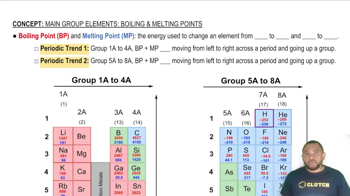Textbook Question
Use the data in Appendix B to calculate the equilibrium pressure of CO2 in a closed 1 L vessel that contains each of the following samples:
(a) 15 g of MgCO3 and 1.0 g of MgO at 25 °C
(b) 15 g of MgCO3 and 1.0 g of MgO at 280 °C .
Assume that ∆H° and ∆S° are independent of temperature.
308
views



